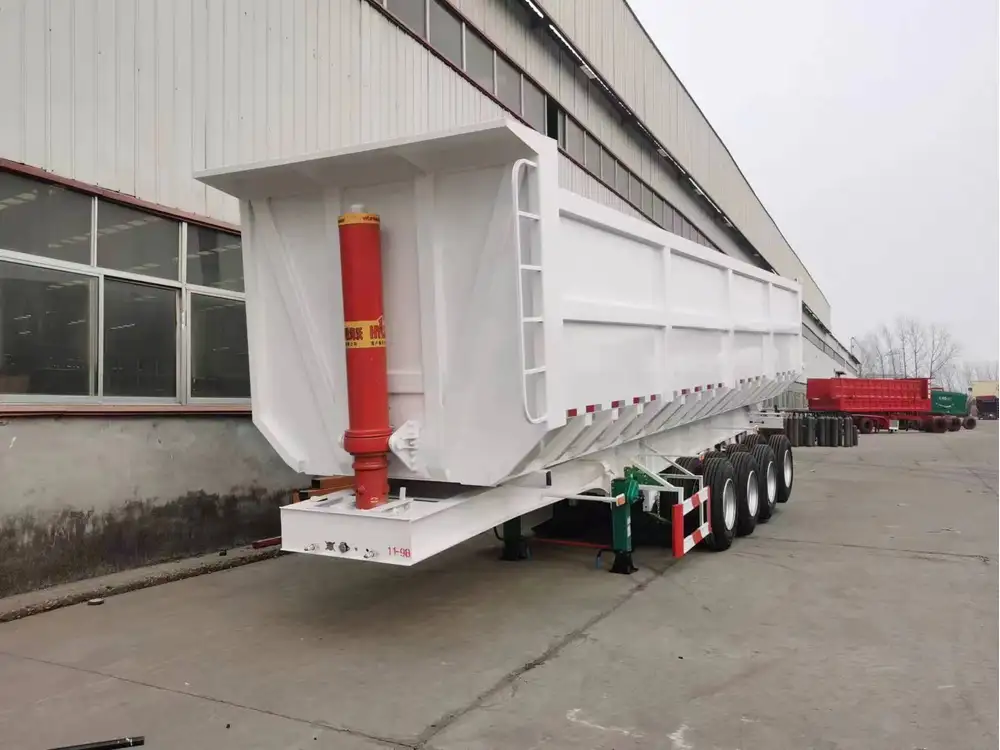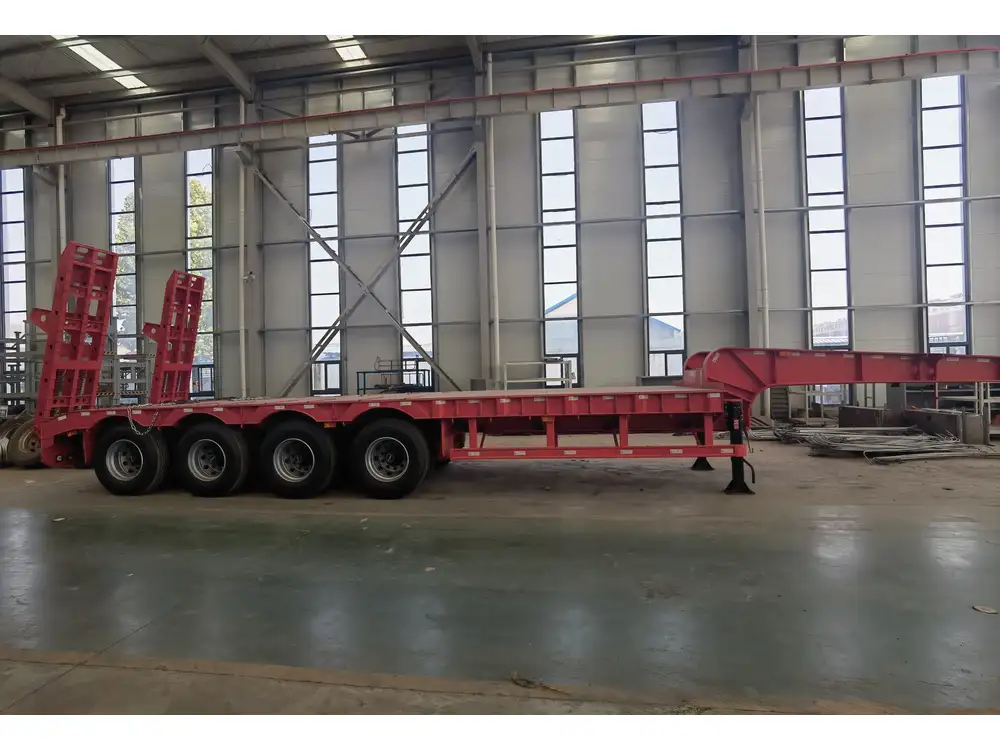Introduction to Gooseneck Trailers
Gooseneck trailers have grown in popularity for transporting heavy loads due to their unique design and superior towing capabilities. These trailers are characterized by their hitching mechanism, which attaches to a ball mounted in the bed of a pickup truck, allowing for enhanced stability and maneuverability, particularly when carrying substantial weights. However, a common query arises: Is a gooseneck trailer strong enough to hold a semi?
To address this, we will delve into the structural integrity of gooseneck trailers, comparing their specifications with traditional semi-trailers, outlining their capacities, advantages, and considerations for effective and safe use.
Key Features of Gooseneck Trailers
Gooseneck trailers are engineered with specific features that contribute to their strength and effectiveness in hauling heavy loads. These include:
| Feature | Description |
|---|---|
| Hitch Design | Attaches to the truck’s bed, facilitating better weight distribution. |
| Load Capacity | Generally ranges from 10,000 to 30,000 pounds or more, depending on design. |
| Length | Typically varies between 16 to 40 feet, allowing for multiple configurations. |
| Construction Material | Often made of high-strength steel or aluminum, offering durability and resilience. |
| Axle Configuration | Can feature dual or triple axles for enhanced stability and load management. |

Strength Characteristics
Gooseneck trailers possess inherent advantages due to their robust construction and optimal weight distribution. The typical load-bearing components of a gooseneck trailer include:
- Frame: Usually constructed from heavy-duty steel, ensuring structural integrity under significant loads.
- Axles: Multi-axle setups enhance load capacity and distribution, reducing stress on individual axles and the trailer frame.
- Wheels: High-load-rated tires designed to support heavier weights while maintaining stability.
Comparative Analysis: Gooseneck Trailers vs. Semi-Trailers
To better appreciate whether a gooseneck trailer can accommodate the weight of a semi, a side-by-side comparison against traditional semi-trailers is prudent:
| Aspect | Gooseneck Trailers | Semi-Trailers |
|---|---|---|
| Weight Capacity | 10,000 – 30,000 lbs (or more depending on specs) | Typically 20,000 – 80,000 lbs |
| Length | 16 – 40 ft | 28 – 53 ft |
| Towing Vehicle | Pickup trucks, some heavy-duty vehicles | Semi-trucks or tractor units |
| Maneuverability | Highly maneuverable in tight spaces | Less maneuverable but higher stability at speed |
| Load Placement | Better weight distribution | Variable, typically designed for flat beds |
Load Efficiency
The gooseneck design optimizes load efficiency. It excels in transporting bulk materials, equipment, and livestock due to its low deck height, making loading and unloading considerably easier. The stability offered by this type of trailer is particularly advantageous for transporting bulky items that require secure positioning during transit.

Gooseneck Trailer Specifications
It is essential to recognize the specific types of gooseneck trailers available, each tailored for different purposes. Here are some common designs:
1. Flatbed Gooseneck Trailers
Ideal for hauling oversized items, flatbed goosenecks offer an open platform, making them suitable for:
- Construction materials
- Heavy pallets
- Equipment and machinery
2. Enclosed Gooseneck Trailers
Designed to protect cargo from the elements, these trailers are excellent for:
- Vehicles (e.g., motorcycles)
- Sensitive equipment
- Trade shows and exhibitions

3. Livestock Gooseneck Trailers
Specially designed for transporting animals, these trailers have ventilation and safety features that cater specifically to livestock haulers.
Key Considerations for Using Gooseneck Trailers with Semi Loads
While gooseneck trailers exhibit strength and flexibility in transporting heavy objects, certain factors must be considered when contemplating their use for semi loads:
Weight Ratings
Understanding weight ratings, including Gross Vehicle Weight Rating (GVWR) and Gross Combined Weight Rating (GCWR), is essential. To ascertain whether a gooseneck trailer can accommodate semi loads, consult the following:
- Ensure the combined weight of the trailer and cargo does not exceed the GVWR.
- Evaluate the towing vehicle’s GCWR to ensure safe towing without exceeding capabilities.

Compatibility with Towing Vehicles
It is also vital to ensure that the towing vehicle is capable of handling the load. For instance, while a half-ton truck may tow most gooseneck trailers, heavier loads would necessitate a more robust vehicle designed for high capacities.
Load Distribution
Proper load placement is critical. Uneven distribution can impact the towing vehicle’s stability and braking efficiency. A balanced load assures minimal strain on the towing system and enhances safety.
Pros and Cons of Gooseneck Trailers

Pros
- Increased Stability: The design maintains a lower center of gravity, leading to better control.
- Flexible Configurations: Options for flatbeds, enclosed bodies, and specialized designs for specific loads.
- Enhanced Turning Radius: Superior maneuverability compared to traditional trailers.
- Higher Weight Capacity: Depending on the construction, they often surpass traditional trailers in carrying capacity.
Cons
- Towing Vehicle Limitations: Requires a compatible towing vehicle, which might increase upfront costs.
- Learning Curve: Some drivers may find gooseneck systems challenging to master compared to conventional trailers.
- Maintenance: Can be more demanding than simpler trailer types, requiring regular inspections and upkeep.
Real-World Applications of Gooseneck Trailers
Gooseneck trailers are widely utilized across several industries due to their strengths and versatility. Their adaptability enables usage in different contexts, including but not limited to:
- Construction: Transporting heavy machinery, construction materials, and equipment from site to site.
- Agriculture: Hauling livestock, hay bales, and farming equipment.
- Automotive: Carrying vehicles for shows or transport.
- Manufacturing: Efficiently moving bulk materials between facilities.

Conclusion: Is a Gooseneck Trailer Strong Enough for Your Semi Needs?
In summation, gooseneck trailers exhibit exceptional strength, capacity, and versatility, making them well-suited for a variety of heavy hauling needs. While they can handle significant weights effectively, whether they are suitable for carrying semi loads is contingent upon the specific circumstances, including the weight of the load, the towing vehicle, and adherence to load distribution guidelines.
When considering a gooseneck trailer for hauling a semi, it is imperative to conduct thorough research and possibly consult with a professional. By assessing load capacities, understanding vehicle limitations, and ensuring safe towing practices, users can take full advantage of the benefits that gooseneck trailers offer while maintaining safety and efficiency on the road.
Final Thoughts
Selecting the correct trailer is crucial in any transportation endeavor. Gooseneck trailers, with their robust design, multifunctionality, and efficiency, stand out as a formidable option for those seeking to transport heavy loads, including semis. With the right considerations, they can prove to be an invaluable asset for manufacturers, suppliers, and businesses reliant on heavy haulage.



